VG-photo's Chino pix- Saturday
Mon May 21, 2007 3:01 pm
Here is a very small sample of what I shot at Chino. I am in the process of editing for my webpage and hope to have it ready by the end of the week.
Enjoy!
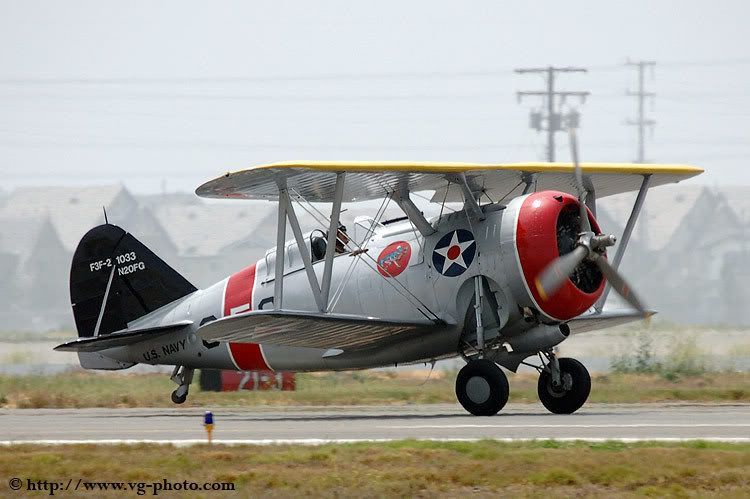
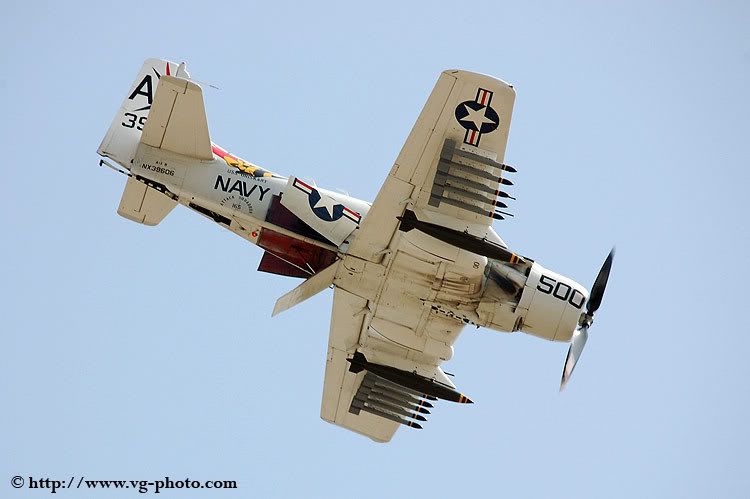
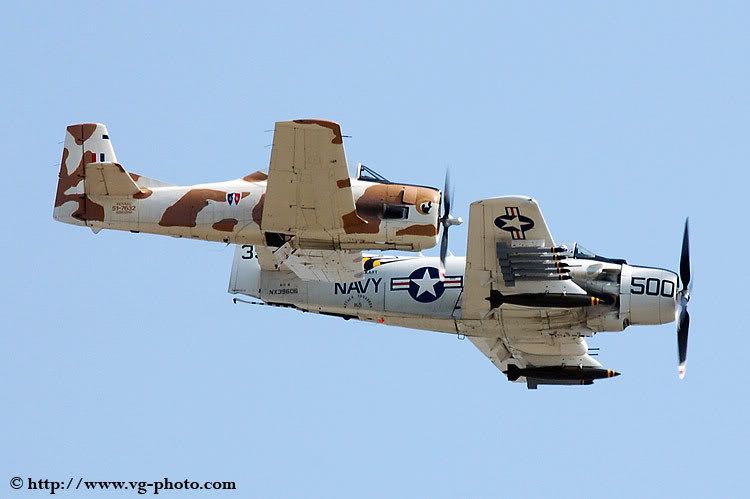
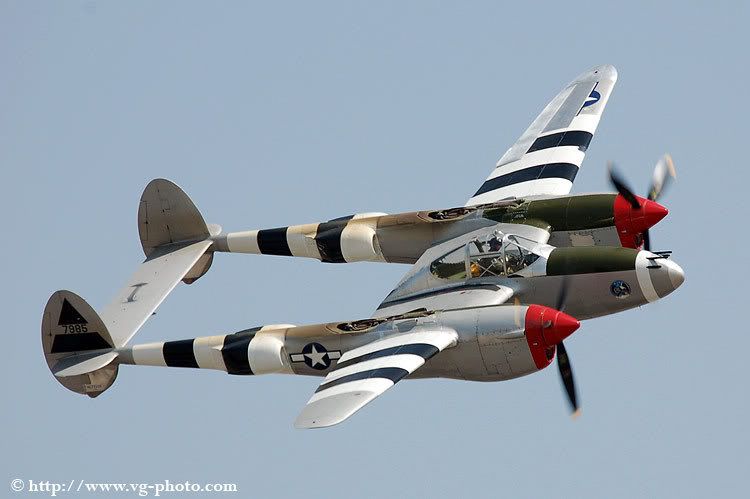
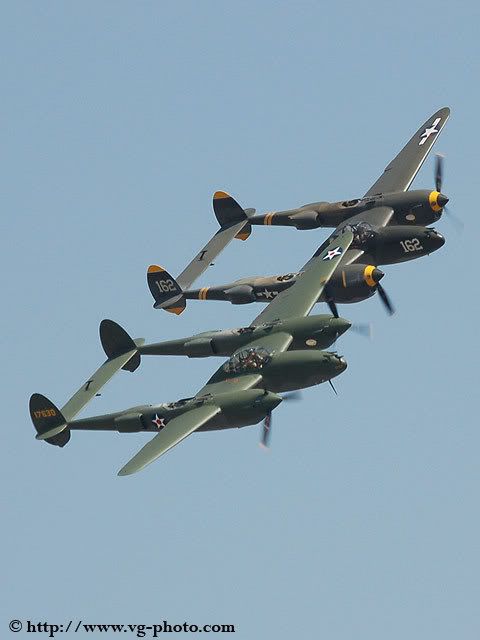
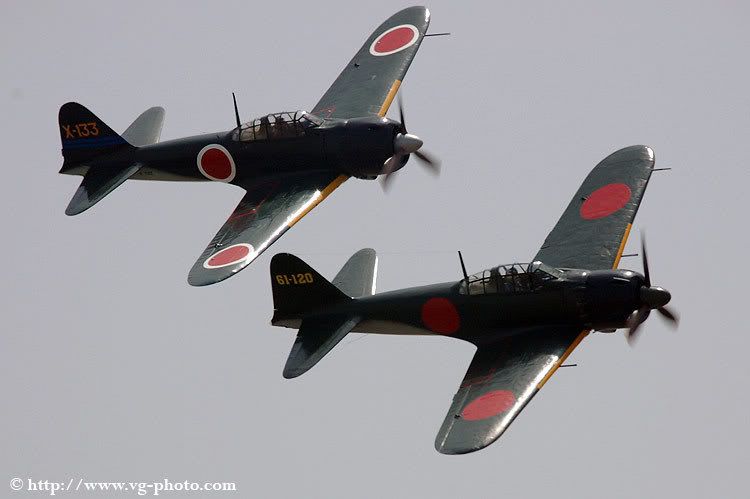
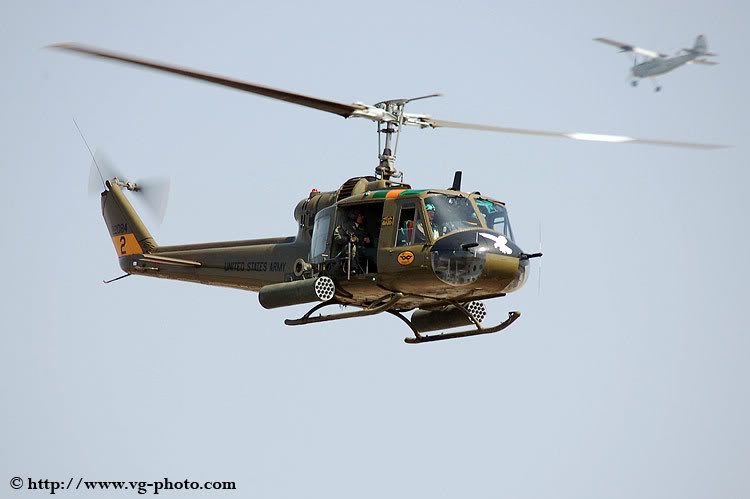
Enjoy!







Mon May 21, 2007 3:28 pm
Well done, thanks for sharing them...
Lynn
Lynn
Mon May 21, 2007 3:28 pm
Fuddy Duddy took a birdstrike on Saturday. Strange how 26 other aircraft can clear it and the tail end charlie gets the strike. The folks at POF said that the 17 hit a turkey vulture and it looks like the bird is inside the wing. It will have to be inspected for wing root and spar damage before it can fly again. The hole is about 12 inches in size.
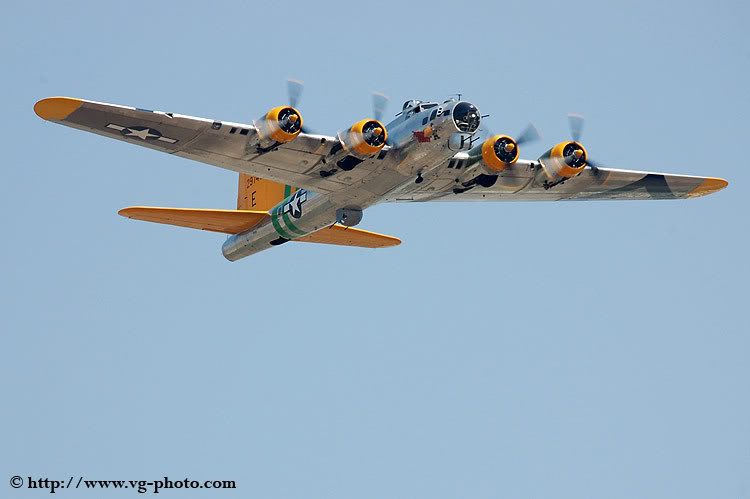
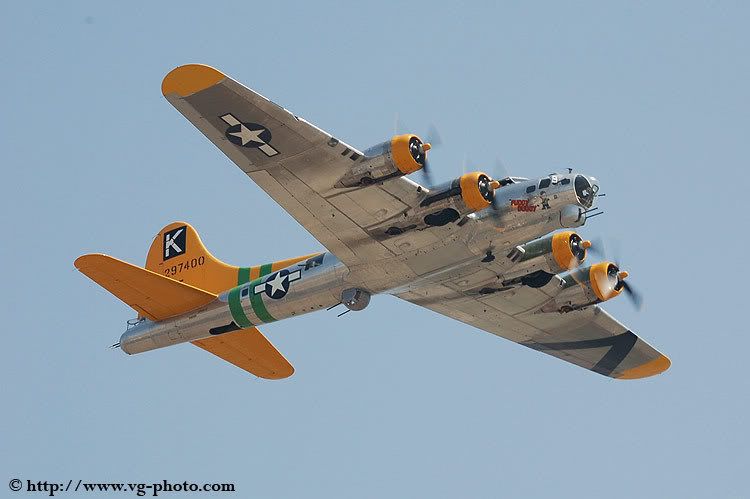
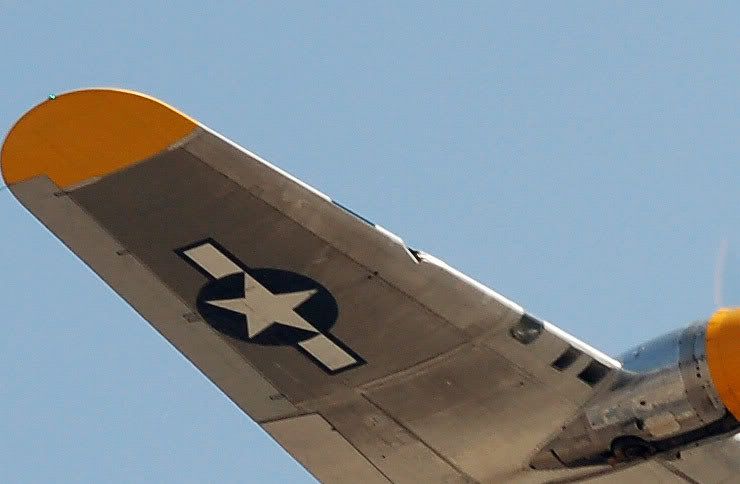



Mon May 21, 2007 3:29 pm
Thanks Lynn. Glad you enjoyed them! 
Fri May 25, 2007 8:08 am
I finally finished the edits and webpages and have 34 galleries of pictures from the Chino show up on my website. You can find the Chino index here:
http://www.vg-photo.com/airshow/chino2007/chino2007.html
http://www.vg-photo.com/airshow/chino2007/chino2007.html
wow....
Fri May 25, 2007 4:04 pm
I just took a peek at your site.. wow...
The P-38 section has some fantastic shots.
What were you using for a camera/lens and settings?
any ideas? mode? shutter? ISO?
and if processed these via photoshop, do you have any hints you
could offer?
man those are awesome. Great work.
henning
(back to work, on to the last concall of the day..)
The P-38 section has some fantastic shots.
What were you using for a camera/lens and settings?
any ideas? mode? shutter? ISO?
and if processed these via photoshop, do you have any hints you
could offer?
man those are awesome. Great work.
henning
(back to work, on to the last concall of the day..)
Fri May 25, 2007 4:46 pm
Thanks.
I have a Nikon D50 and I shoot through a Sigma 50-500mm DG lens. Shutter speed depends on a number of factors. For jets, I typically shoot at 1/1000 of a second, mainly because there is nothing moving on the jet to move. For prop planes in the sky, I go anywhere from about 1/250 to 1/500, depending on how much zoom I am using, lighting and how fast the plane is travelling.
I do use auto-ISO, as it is a nice feature on the Nikon and I sometimes have a tendency to over-expose, so it's nice to have the ISO adjust accordingly.
I do use photoshop. I mainly use it to resize the image, maybe adjust brightness/contrast or shadow/highlights. If I have to spend too much time on the image, it's just not going to happen. And when resizing images smaller, you may want to sharpen slightly to bring out details that can get lost when resizing.
For photoshop hints, well, I am not sure what to tell you. There is so much to the software and I am still learning as I go...after 2 years of using it! There are a lot of good tutorials and such online to teach you different things.
Glad you enjoyed the shots. More to come as the year goes on.
I have a Nikon D50 and I shoot through a Sigma 50-500mm DG lens. Shutter speed depends on a number of factors. For jets, I typically shoot at 1/1000 of a second, mainly because there is nothing moving on the jet to move. For prop planes in the sky, I go anywhere from about 1/250 to 1/500, depending on how much zoom I am using, lighting and how fast the plane is travelling.
I do use auto-ISO, as it is a nice feature on the Nikon and I sometimes have a tendency to over-expose, so it's nice to have the ISO adjust accordingly.
I do use photoshop. I mainly use it to resize the image, maybe adjust brightness/contrast or shadow/highlights. If I have to spend too much time on the image, it's just not going to happen. And when resizing images smaller, you may want to sharpen slightly to bring out details that can get lost when resizing.
For photoshop hints, well, I am not sure what to tell you. There is so much to the software and I am still learning as I go...after 2 years of using it! There are a lot of good tutorials and such online to teach you different things.
Glad you enjoyed the shots. More to come as the year goes on.
Fri May 25, 2007 5:05 pm
Great pics, thanks for sharing. 
Sat May 26, 2007 2:45 am
As always Eric, fantastic photos!!!!
Sat May 26, 2007 7:22 am
Good morning, Eric. I have just come from your website, where I enjoyed a two-coffee browse through some great photographs. However, I nearly dumped cup number two into my laptop when I saw the following under the F4F heading: "...the first 95 aircraft were built and exported, five went to Canada and 90 went to the British..."
Wherever did you get the idea that Grumman Wildcats or FM-2s served with the Canadian Forces? I am no expert on the Fleet Air Arm and I will quickly admit that these aircraft might have been flown off Brit carriers by RCN pilots, but I would very much appreciate knowing your source for this statement.
Thanks again for some great shooting - and sharing!
Doug
Wherever did you get the idea that Grumman Wildcats or FM-2s served with the Canadian Forces? I am no expert on the Fleet Air Arm and I will quickly admit that these aircraft might have been flown off Brit carriers by RCN pilots, but I would very much appreciate knowing your source for this statement.
Thanks again for some great shooting - and sharing!
Doug
Sat May 26, 2007 8:19 am
Thanks guys.
Doug, the initial orders for the G-36A (XF4F) came from France (80 aircraft) and Greece (30 aircraft) in the late 1930s (1938 or 1939). By the time the first of the French ordered aircraft flew, France had already fallen. The British Purchasing Commission agreed to take the order, upping the order to 90. The first of those began to arrive in July of 1940, after the first five were sent to Canada. I have that data in several references. American Aircraft of WWII by David Mondey and Aircraft of WWII by Bill Gunston are two of the references that specifically mention the first 5 going to Canada. What is not described is why the first five went to Canada. I would assume to familiarize the Canadian pilots and crew with the aircraft, but that is only my guess.
Doug, the initial orders for the G-36A (XF4F) came from France (80 aircraft) and Greece (30 aircraft) in the late 1930s (1938 or 1939). By the time the first of the French ordered aircraft flew, France had already fallen. The British Purchasing Commission agreed to take the order, upping the order to 90. The first of those began to arrive in July of 1940, after the first five were sent to Canada. I have that data in several references. American Aircraft of WWII by David Mondey and Aircraft of WWII by Bill Gunston are two of the references that specifically mention the first 5 going to Canada. What is not described is why the first five went to Canada. I would assume to familiarize the Canadian pilots and crew with the aircraft, but that is only my guess.
Sat May 26, 2007 8:26 am
Interesting how that order came to be. Sounds very much like the original B-24 contracts. Thanks for sharing.
Gary
Gary
Sat May 26, 2007 2:52 pm
D'you know, Eric, in forty years of aviation historical research, I have never heard that story before and I am going to spend a few days (or more!) looking into this 'Canuck F4F' situation. I can't believe they ever sat on Canadian soil, but I'm too old and too smart to make bets of that sort! 
Thanks for coming up with my 'learn something new' for today.
Doug
Thanks for coming up with my 'learn something new' for today.
Doug
Sat May 26, 2007 3:25 pm
Well, Doug, I used to give presentations at the CAF museum down in Camarillo, and you often pick up gems like that in your research, as I am sure you have. I will also do a little digging. There has to be a reason for the 5 going to Canada. The only one I could speculate is above, but there may be another reason. I just don't know. But all researchers love a good mystery. 
Sat May 26, 2007 4:06 pm
I was doing some reading and found that the French orders were armed with 6 French 7.5mm machine guns and French radios and other gear. Once the British took over the order, the had them replaced with 4 Browning machine guns and English radios and gear.
Could they have sent the first ones to Canada to have them do the retrofits and write up the procedure as the other ones were en route across the Atlantic? Once the other arrived, they would have the complete instructions on how to change out the French gear. Just another theory...
But I also found this:
http://www.rcaf.com/aircraft/fighters/w ... %20Wildcat
Could they have sent the first ones to Canada to have them do the retrofits and write up the procedure as the other ones were en route across the Atlantic? Once the other arrived, they would have the complete instructions on how to change out the French gear. Just another theory...
But I also found this:
http://www.rcaf.com/aircraft/fighters/w ... %20Wildcat